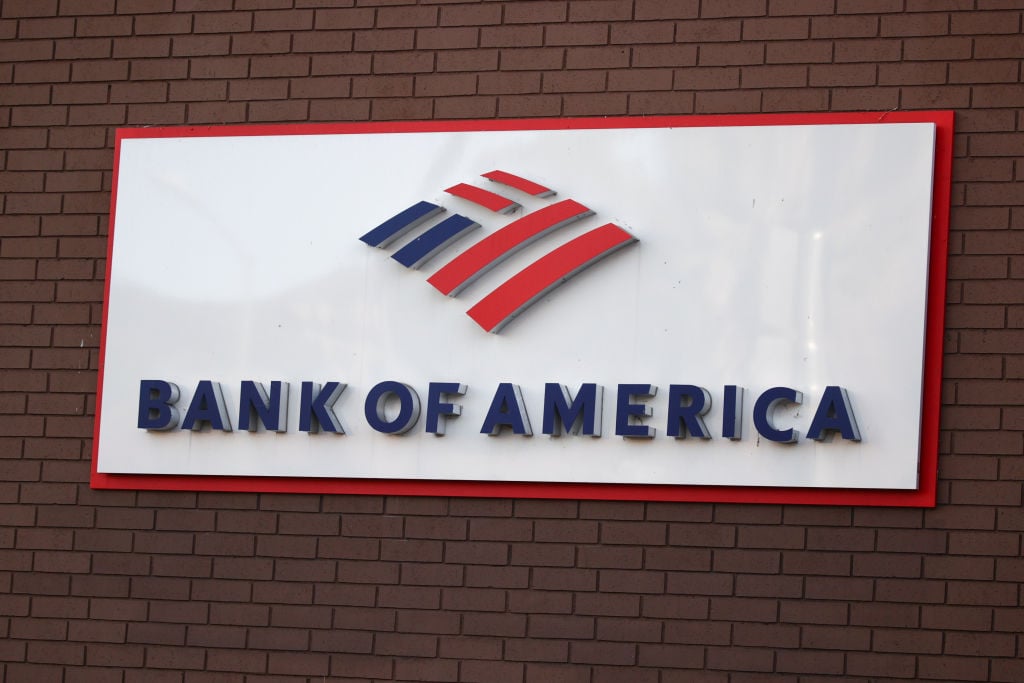After sifting through countless small caps and mid-cap stocks to rule them all over the past 20 weeks, the time has finally come to tackle large-cap companies. Large caps will usually not offer the same torrid growth pace that can be found with small caps, but their businesses are often well established globally, with a rich history of profitability. This global presence gives large caps a distinctiveness that small and mid-caps usually don't have -- namely, that many pay a dividend and can essentially run on autopilot in your portfolio.
For reference, here are the previous two choices:
This week, I want to take a step in a different direction and dig deep into the value vault with one of America's least favorite companies, Bank of America (NYSE: BAC).
What it does
Bank of America is a full service financial institution that provides banking, asset management, and credit card services to commercial and personal account holders. One of the poster children of "too big to fail," Bank of America has recovered from the lows of the credit crisis and is now dealing with the aftereffects of years' worth of poor-quality housing loans derived from its purchase of Countrywide Financial.
How it stacks up
Normally in this series I'm looking for companies that are leading their pack or go largely unrecognized; Bank of America falls in neither of these categories.
The draw to Bank of America begins with the old adage that you "buy banks when they trade at half of their book value and sell them when they hit two times their book value." Currently valued at less than 40% of its book value, the intrigue began.
Digging deeper, it's apparent that the company's problems aren't going to be fixed overnight. It reported an exorbitantly large quarterly loss of $8.8 billion last quarter, which stemmed predominantly from massive mortgage banking losses, legal settlements, and goodwill impairments. In addition to attempting to settle for $8.5 billion in charges that Countrywide misrepresented the quality of loans it sold to investors, Bank of America now faces a $10 billion lawsuit from AIG (NYSE: AIG), which claims that Bank of America purposefully sold it overvalued mortgage-backed securities.
Despite these legal battles, there are plenty of positives that can be taken away from Bank of America. First, outside of these one-time writedowns, Bank of America's other businesses are collectively earning money. In fact, analyst estimates for 2012 range from a profit of $0.75 to as high as $2.40 for a consensus forward P/E of five! More importantly, the aspects that make a bank attractive -- which include deposit growth, credit quality, and capital ratios -- all went in the right direction during the quarter. It may not seem obvious at first, but let's see how Bank of America stacks up to some of its peers, and you'll see why it's my favorite:
|
Company |
Price/Book |
Forward P/E |
|---|---|---|
| Bank of America | 0.36 | 5.0 |
| Wells Fargo (NYSE: WFC) | 1.03 | 7.1 |
| JPMorgan Chase (NYSE: JPM) | 0.80 | 6.5 |
| Citigroup (NYSE: C) | 0.50 | 5.8 |
| US Bancorp (NYSE: USB) | 1.43 | 8.5 |
| Bank of New York Mellon (NYSE: BK) | 0.76 | 8.1 |
Source: Yahoo! Finance.
As long as Bank of America's other business segments remain profitable and it can contain its litigation issues, then it trades at a significant discount to both its future earnings and its book value relative to the sector. This table also demonstrates just how undervalued the entire sector is at the moment.
How it could make you money
Bank of America is an easily recognizable brand name with consumers, and it can easily use that image to reinvent itself. As reported in its quarterly filing, the company doesn't have to retool its entire business since many segments are solidly profitable. Continuing to rework its mortgage-backed portfolio and bolstering its cash position over the next few years should do wonders to put investors' minds at ease.
It's taken three full years, but it appears the extra revenue stream added by its Merrill Lynch purchase are beginning to (forgive the pun) pay dividends. This past quarter marked the highest investment banking fees in the company's history, at $1.6 billion. This revenue stream often goes unnoticed by analysts and could be the extra component that helps get Bank of America back on track.
Don't forget about the company's dividend. Sure, it's a mockery of the sector right now at just $0.01 per quarter, but this once-handsome dividend payer could very easily do what JPMorgan did earlier in the year and reinstate a healthy dividend by next year. Its cash flow remains strong, and with the company now focusing on itself instead of acquisitions, it looks like it has considerably more upside than downside potential at these levels.
What's your take on Bank of America? Share your thoughts in the comments section below and consider adding Bank of America to your watchlist.



